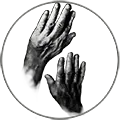How to Relax During a Massage
When it comes to getting the most out of your massage session, active relaxation can make a significant difference. By consciously relaxing your body and mind during the massage, you can enhance the benefits of the therapy and achieve a deeper level of relaxation. This technique involves being present at the moment, focusing on your breathing, and releasing tension from your muscles.
Muscle tone and relaxation
Normally, a muscle cannot relax 100%. Residual muscle tension present at rest is called muscle tone. The degree of muscle tension at rest can vary within fairly wide intervals and vary in different muscle groups. It is influenced by many processes in the body: the level of hormones, the state of the nervous system, the emotional levels, and so on, often in combination with each other. Increased muscle tone can cause discomfort and frequent muscle pain.
Relaxation is based on a decrease in muscle tone, which helps to improve the condition of muscles, decrease mental tension, and relieve stress.

In order to get the most out of a massage, especially a relaxation massage, it is helpful to do some easy work during the massage session.
Psychological Setting
Right before the start of the massage, make a psychological setting – not think about problems during the massage. Just tell yourself in the form of an order something like:
I do not think about my problems during the massage.
This simple action will set you up for relaxation. You are giving order to your brain. It is known that a human is able to control only a part of the brain. Many brain structures are not controlled by your consciousness but consider your desires. Therefore, clear and precise orders are easier to read by the subconscious structures.
Calming the breath
Right after starting the massage session, focus on breathing. Calm your breathing, make it slow, light, but at the same time deep enough. Use both the chest and abdomen to engage the diaphragm. Try to mentally imagine that with each exhalation, problems and tension leave the body.
There are many approaches to breathwork. Just search and choose the one you like best. It will really help you in your life. If you don’t like to search, just breathe deeply, but calmly and evenly as described above.
“Clearing” the brain
Now it is time to clear your head of problems. Throw thoughts out of your head one by one.
You can imagine a kind of “gray room” or “gray fog” – an empty gray space around yourself or your head.
Contemplate this gray space and drive away any thought that invades this space. Just cut off the thought and thought it out of your gray room. Try to keep this image as long as possible.
You can use any other mental image, not just the “gray room”. Just try to keep this image as simple as possible with a minimum of detail.
Relaxation
Having adjusted your breathing and cleared your head, it’s time to start actually relaxing.
There may be many options here. You kind of cast your mind’s eye over your body and imagine that it slowly melts like butter in the sun. Slowly melting and spreading around.
You can follow the hands of the massage therapist and “soften” the area that is being worked on. At the same time, try to keep the gray room in your head and maintain easy, calm breathing.
Many different relaxing techniques have been developed – from simple and rational to esoteric. Search and learn and try the one you like. And apply right at this stage.
If something is wrong
If you feel that the massage therapist’s manipulations are too strong or unpleasant for you, you can “emerge” from your state for a moment in order to correct the technique. Just tell the massage therapist what exactly is unpleasant.
This is very important to achieve a high-quality massage, especially if you are planning further massage sessions with this specialist.
It should be noted that in general any feedback and comments are very valuable for subsequent massage sessions. A good massage therapist will certainly write down your comments and take them into account in subsequent sessions.
It is best to speak as soon as you feel uncomfortable. This will give the massage therapist a clear understanding of what is wrong.
After saying, try to immediately “sink” back into relaxation. If this is difficult to do, go through the steps above again.
These are the recommendations I usually give to my clients at my massage clinic in Chaparral, Calgary Southeast.
